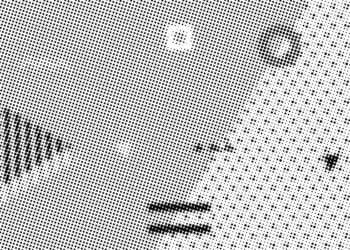The EU’s Carbon Border Adjustment Mechanism (CBAM) introduces new requirements for anyone who exports to the European Union. Assent’s Devin O’Herron explores what companies need to know about CBAM.
As of July 31, CBAM will require importers to source primary carbon emissions data directly from manufacturing installations where in-scope goods are produced, phasing out the default emission values that were initially accepted for quarterly reporting. This means any business exporting in-scope goods should expect to see an increase in data requests from EU customers and potentially new compliance requirements in upcoming customer contracts.
Understanding the CBAM
CBAM is a measure to level the carbon-price playing field for EU manufacturing by equalizing what’s paid by producers inside and outside the EU. It reduces “carbon leakage,” which is when manufacturers move production to countries with more lax emission policies. CBAM aims to remove the economic advantage of sourcing certain materials outside the EU.
To provide primary emissions data to EU customers, suppliers will need to identify and engage their installations. This may be a company’s own operations, one or more tiers further upstream or both. The end goal for a CBAM importer is to source embedded emissions information by CN code, the trade classification codes that determine the scope of CBAM goods, and by installation.
The CBAM regulation lays out specific methodologies for calculating and reporting emissions, used to support purchasing CBAM certificates. However, CBAM requires an unprecedented level of granularity, creating new challenges for reporters and their suppliers. Although EU importers are the ones with financial implications under CBAM, non-EU suppliers are facing the risk of market access loss.
For many exporters, CBAM represents a sea change in EU market access. It highlights the gap in ESG policies between North America and the EU. Importers will be using this transitional period of CBAM to determine who can and cannot provide installation-level data and quantify the financial impacts of their sourcing decisions. Exporters to the EU now need to play catch-up if they want to protect their market access.
Mapping Efforts to Mitigate Supply Chain Risks
Managing third-party relationships key to rising compliance requirements
Read moreDetailsWhat’s at stake?
As CBAM compliance gets more complex, EU manufacturers will be forced to prioritize suppliers that can provide primary embedded emissions data. Suppliers exporting to the EU that are not currently collecting emissions data at the depth required by CBAM risk losing out to EU-based competitors as customers re-source and reshore.
In addition, without efficient processes in place, CBAM compliance will make it more costly and time-consuming to maintain customer relations. Because North American supply chains can be less mature in ESG reporting than their European counterparts, exporters should expect to invest hours of coaching and number-crunching to get the minimum data needed.
For importers, having accurate emissions data will be key to offsetting any carbon price already paid outside of the EU, purchasing accurate amounts of CBAM certificates, and avoiding potential enforcement fines and penalties.
In short, North American manufacturers without a supply chain sustainability reporting program will need to choose between bowing out of the EU market or competing with EU suppliers who have a head start.
How to prepare for new CBAM requirements
Identify in-scope products
Exporters should review the CBAM legislation to understand if their goods are in scope and identify their potential exposure to data requests from EU customers. Goods with a common nomenclature (CN) code listed in Annex I of the regulation will require embedded emissions data from the installations where they were produced. In-scope product categories include cement, iron and steel, aluminum, fertilizers, hydrogen and electricity.
Evaluate business case for compliance
Every business exporting in-scope goods should review their bottom line to assess how much of their revenue is from sales to the EU. For some manufacturers, it may not be worth the time and effort to establish a carbon accounting process to maintain EU market access. However, there are many businesses that depend on the EU market that will get a strong return on investment from a carbon program.
Assess your supply chain to identify installations
Unless they are a primary installation themselves, most manufacturers will have upstream suppliers that will need to provide embedded emissions data. To get started, identify all in-scope installations and their compliance contact persons.
Train & engage suppliers
For exporters, CBAM was already likely on their radar. But for upstream suppliers, the next few months may be the first time they’ve even heard of the new carbon emissions reporting requirements. Downstream installations aren’t technically in the scope of CBAM, so they may need some education and extra support.
First, exporters should provide context for new emissions data requests and why this information is needed to continue doing business together. Training courses or meetings with compliance or sustainability team members will be particularly helpful here.
Next, exporters and their suppliers should ensure their data requests and emissions submissions are aligned with the CBAM calculation methodologies.




 Devin O’Herron
Devin O’Herron









